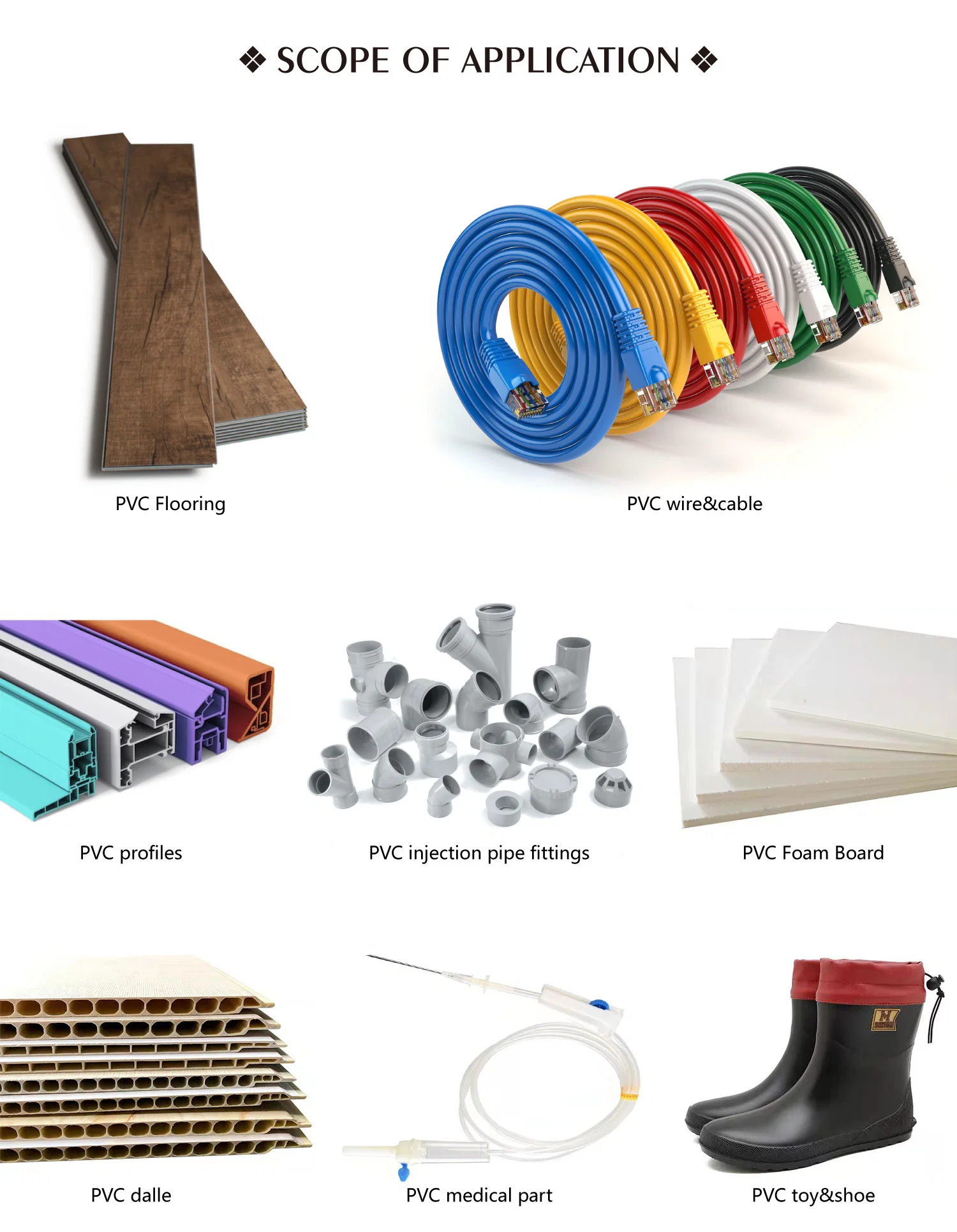The World Before PVC Stabilizers

World of PVC Stabilizers applications
Before the advent of PVC stabilizers, the use of PVC was limited due to its thermal instability. When heated, PVC tends to degrade, releasing hydrogen chloride (HCl), which further accelerates its decomposition. This instability restricted PVC’s applications, as it could not withstand the processing temperatures required for molding and extrusion.
Limited Applications
Construction: PVC’s potential in construction was largely untapped. It could not be used for pipes, window frames, or other building materials that required durability and resistance to weathering.
Medical: The medical industry could not utilize PVC for flexible tubing, blood bags, or other critical applications due to its instability.
Consumer Goods: Everyday items like toys, clothing, and packaging materials were not feasible with PVC, limiting the material choices available to manufacturers.
The Introduction of PVC Stabilizers
The development of PVC stabilizers in the mid-20th century marked a turning point. These additives, including lead, tin, and calcium-zinc compounds, were designed to prevent the degradation of PVC by neutralizing HCl and enhancing the material’s thermal stability.
Types of Stabilizers
Lead Stabilizers: Initially popular due to their effectiveness and low cost, but later phased out due to environmental and health concerns.
Tin Stabilizers: Known for their high thermal stability and transparency, ideal for clear PVC products.
Calcium-Zinc Stabilizers: Eco-friendly alternatives that provide good heat stability and are widely used in world today.
The World After PVC Stabilizers
With the introduction of stabilizers, PVC’s applications expanded dramatically. The material’s enhanced durability, weather resistance, and thermal stability opened up new possibilities across various industries.
Expanded Applications
Construction: PVC became a staple in the construction industry. It is now used for pipes, window frames, siding, and flooring, offering a durable and cost-effective alternative to traditional materials.
Medical: The medical field benefited immensely, with PVC being used for flexible tubing, blood bags, and other critical applications, ensuring safety and reliability.
Consumer Goods: PVC is now ubiquitous in consumer products, from toys and clothing to packaging materials, providing versatility and durability.
Environmental and Health Considerations
While PVC stabilizers have brought numerous benefits, they also raised environmental and health concerns. Lead stabilizers, in particular, posed significant risks, leading to a shift towards safer alternatives like calcium-zinc stabilizers. The industry continues to innovate, focusing on sustainable and eco-friendly stabilizers to minimize environmental impact.
Conclusion
The introduction of PVC stabilizers transformed the material from a limited-use polymer to a versatile and essential component in various industries. While challenges remain, particularly regarding environmental impact, ongoing advancements in stabilizer technology promise a more sustainable future for PVC applications.
Click here to purchase our products
